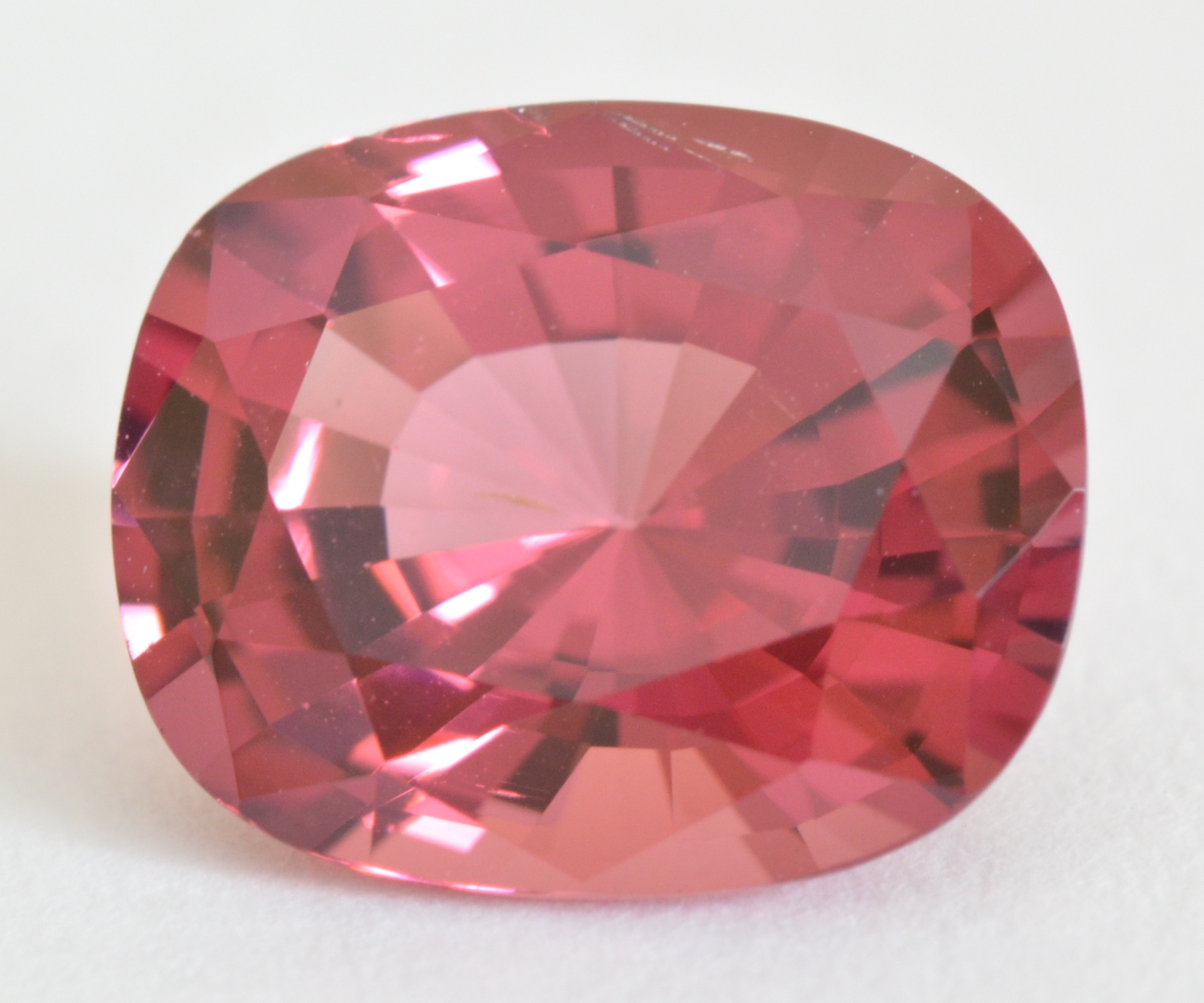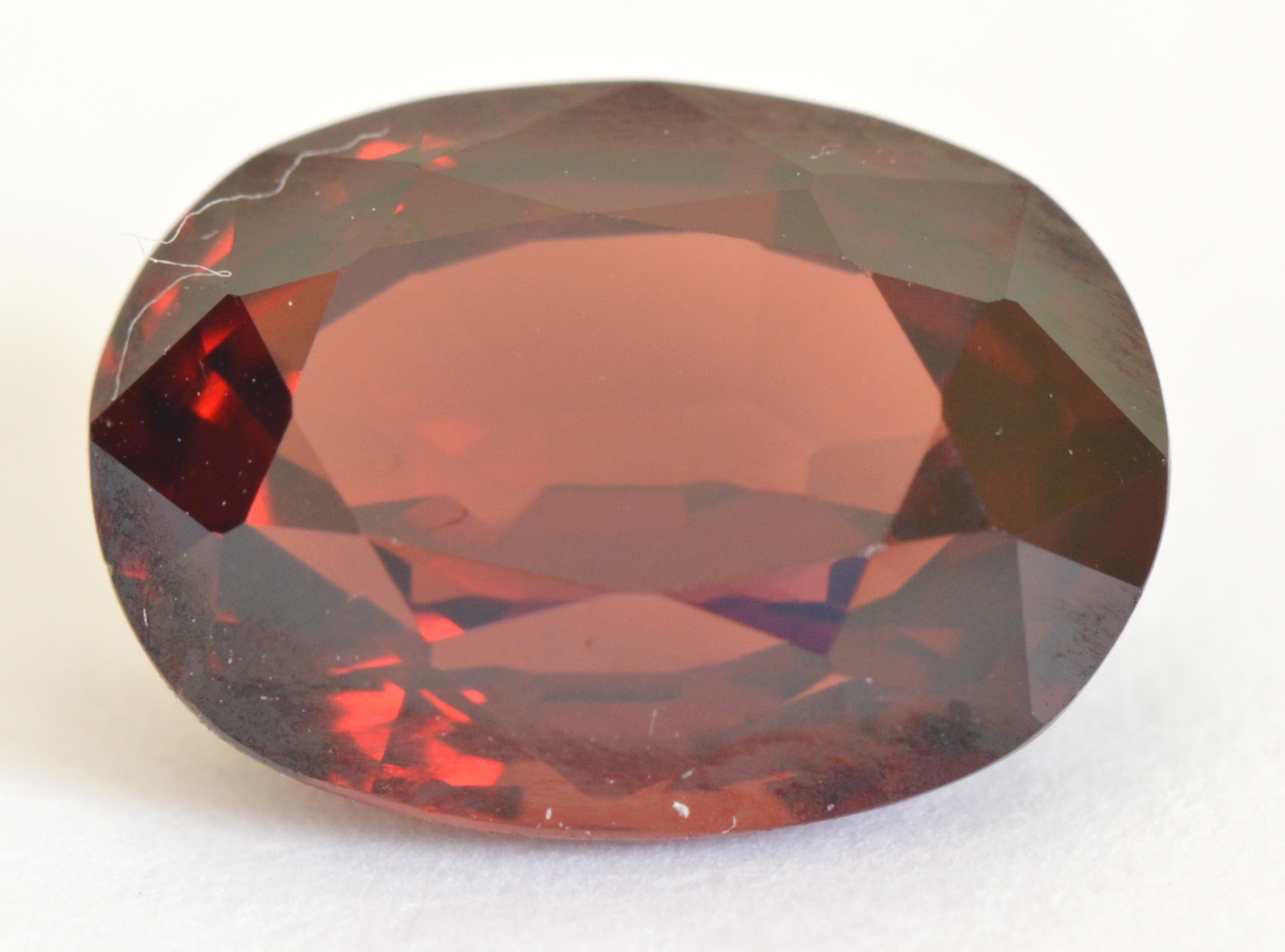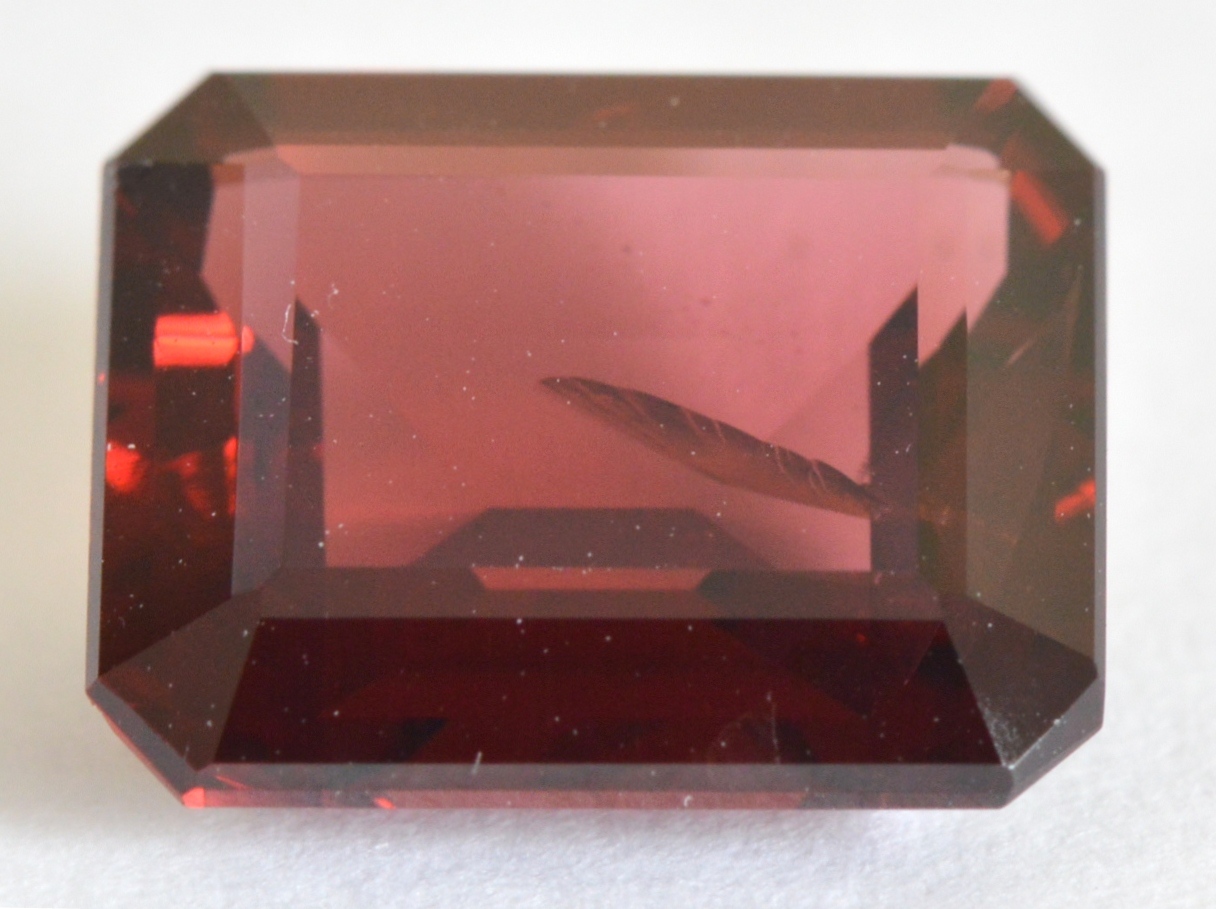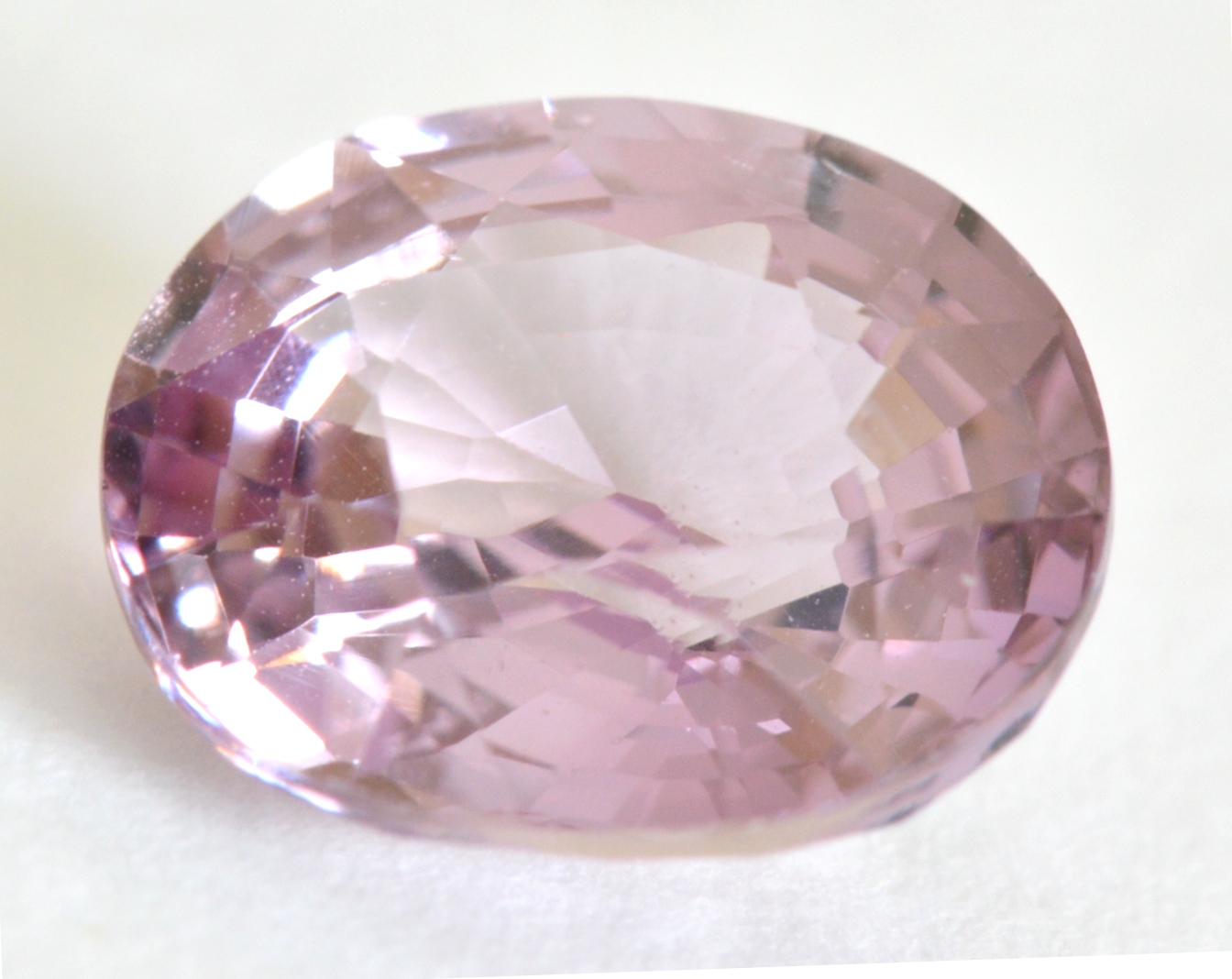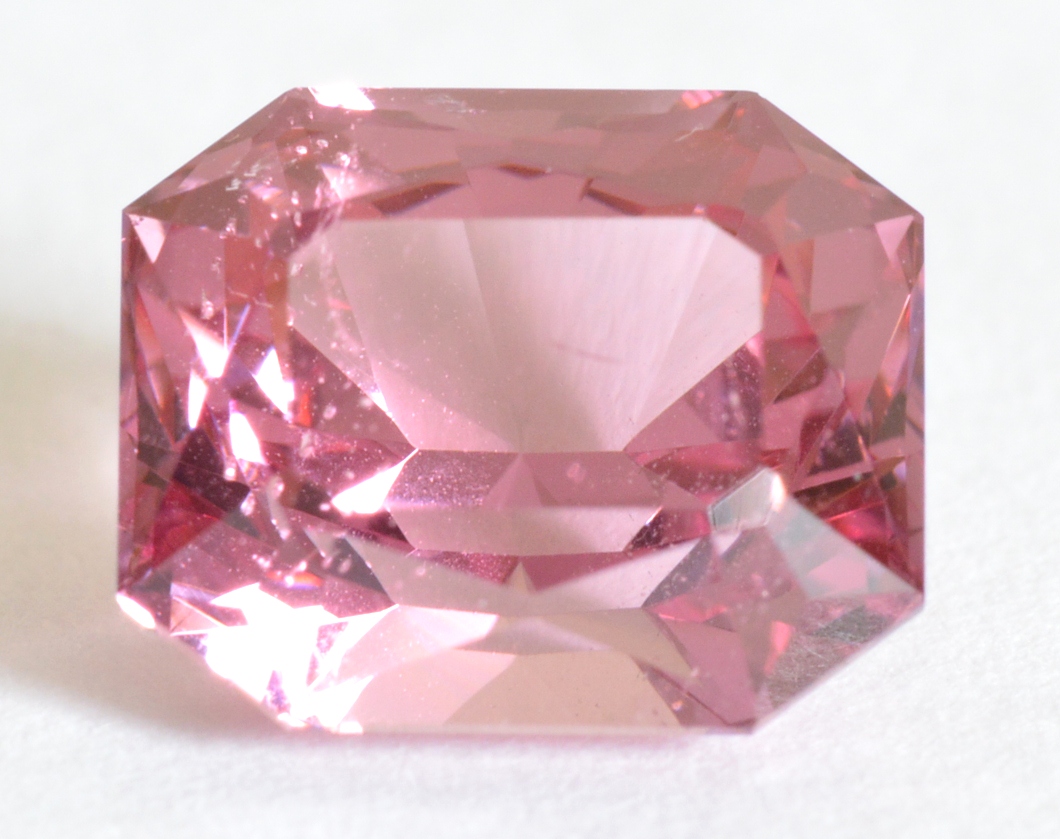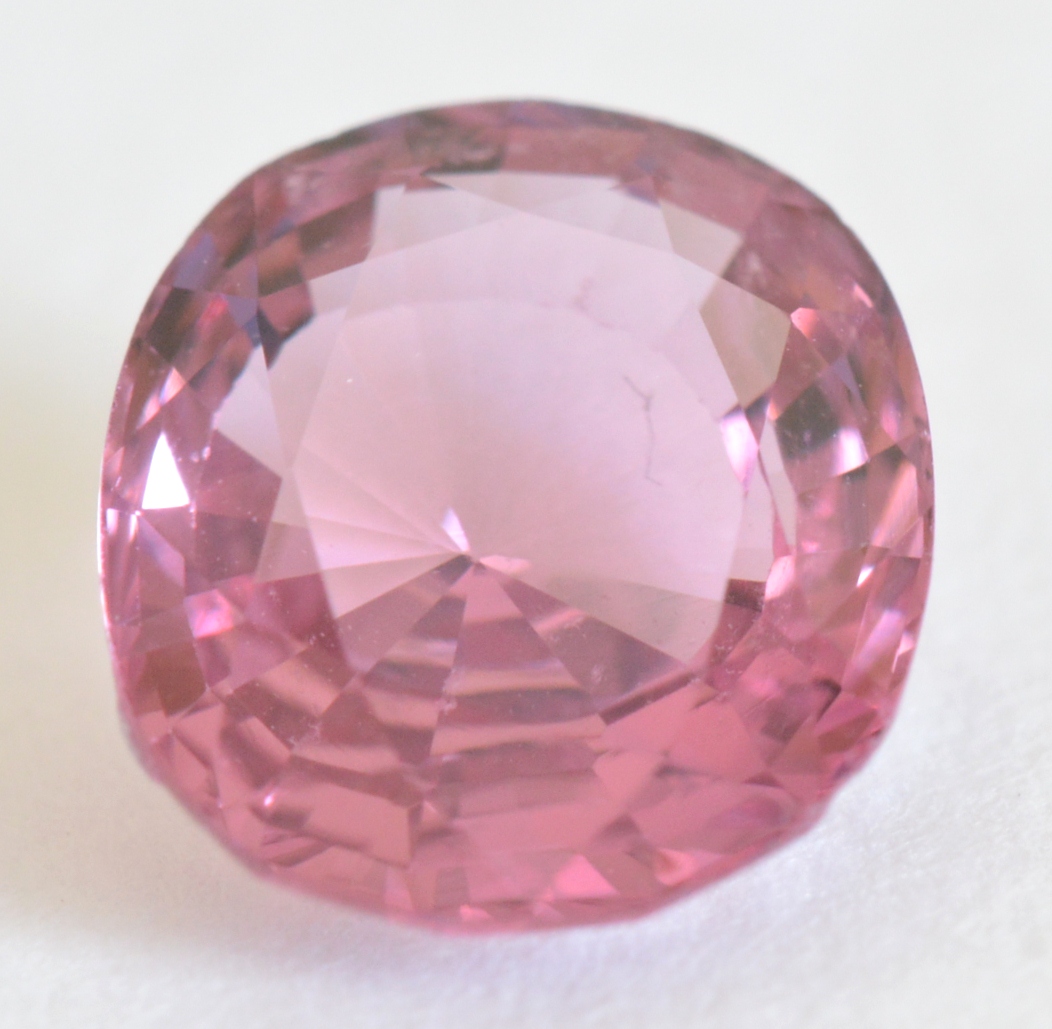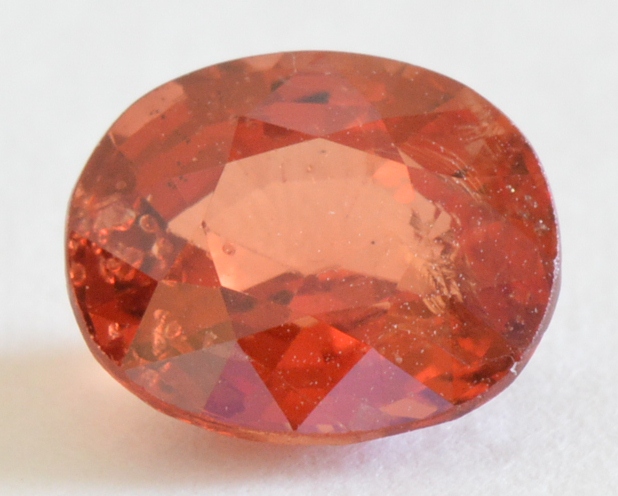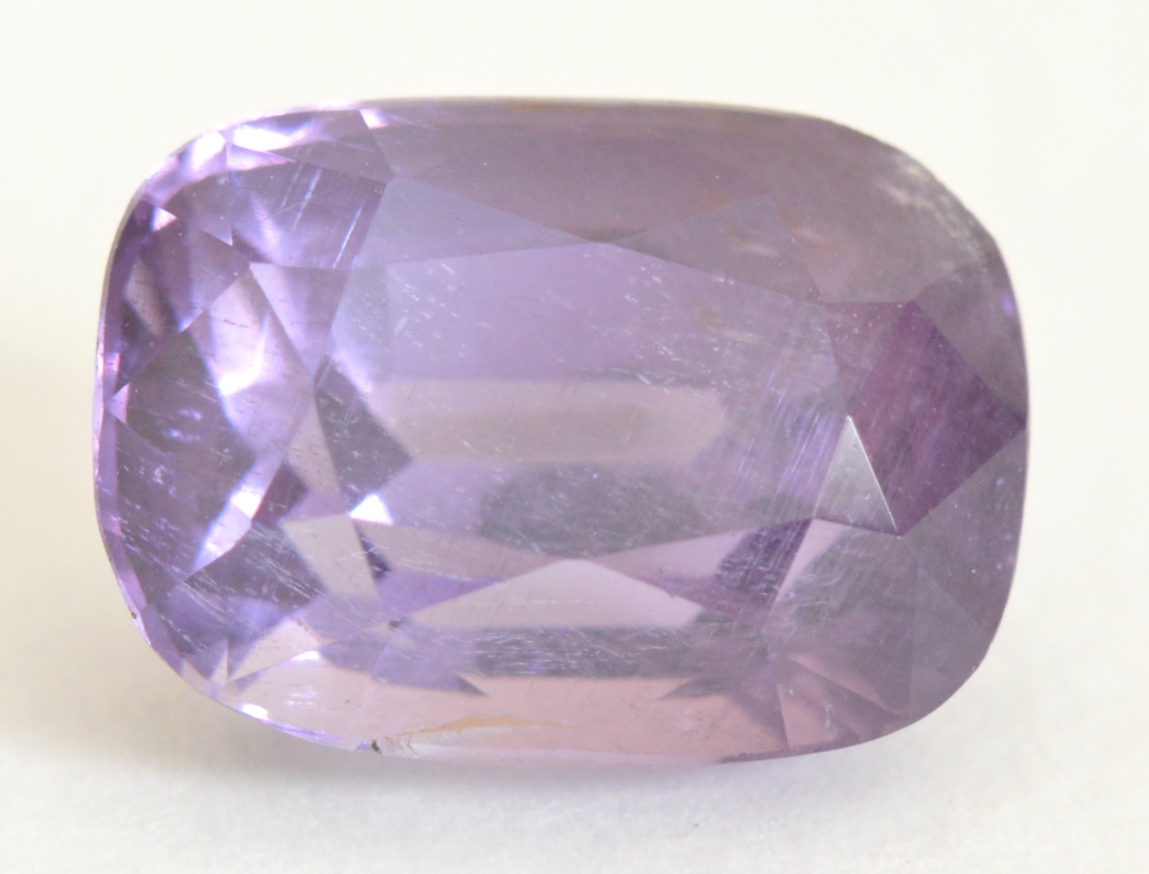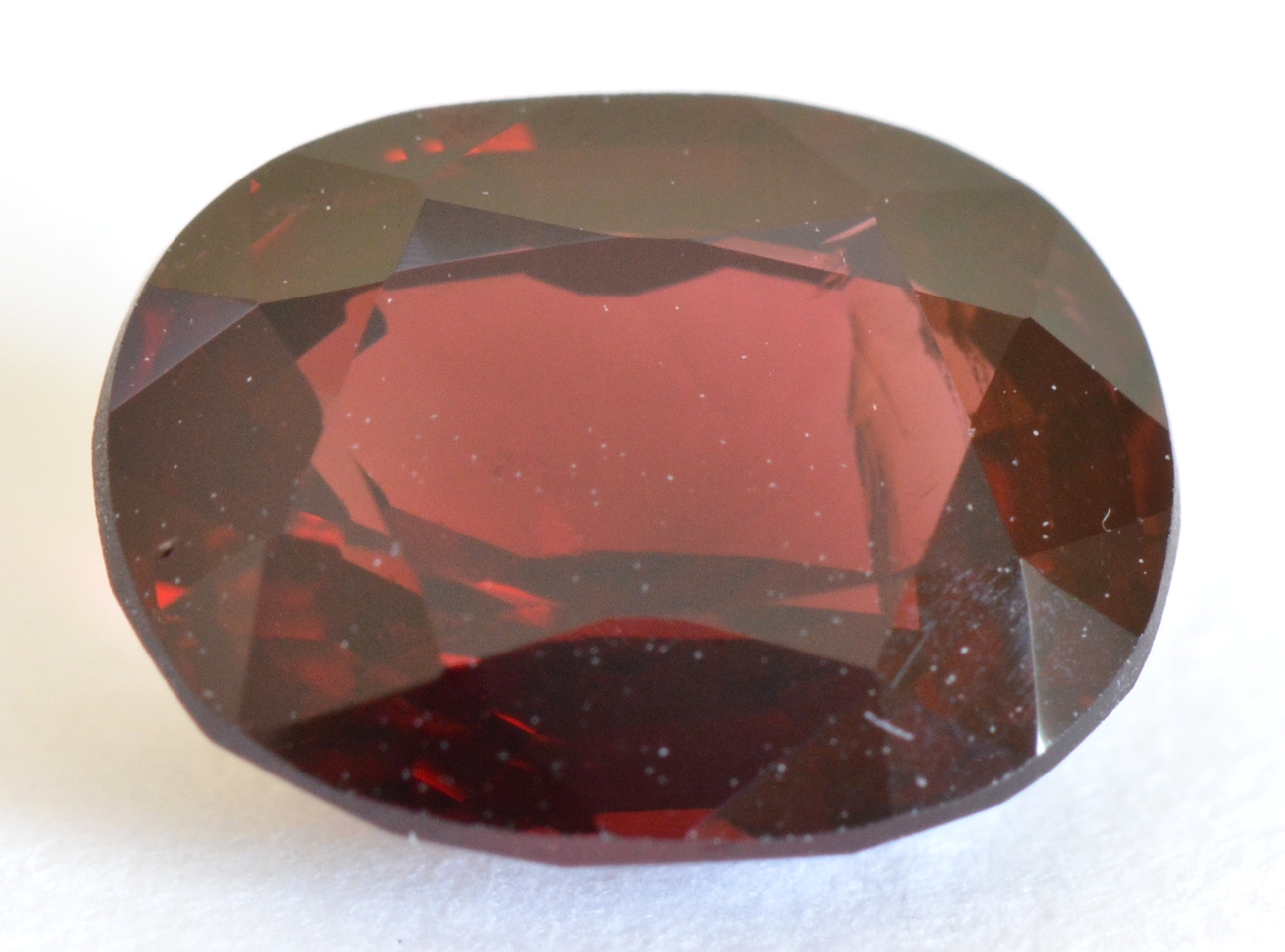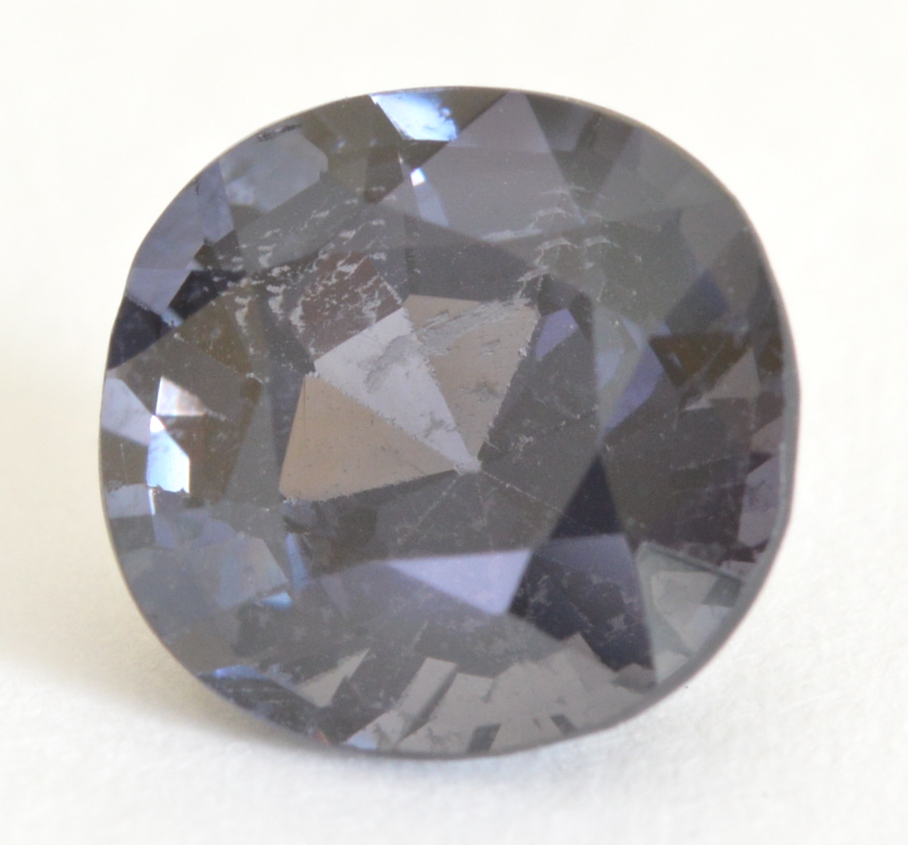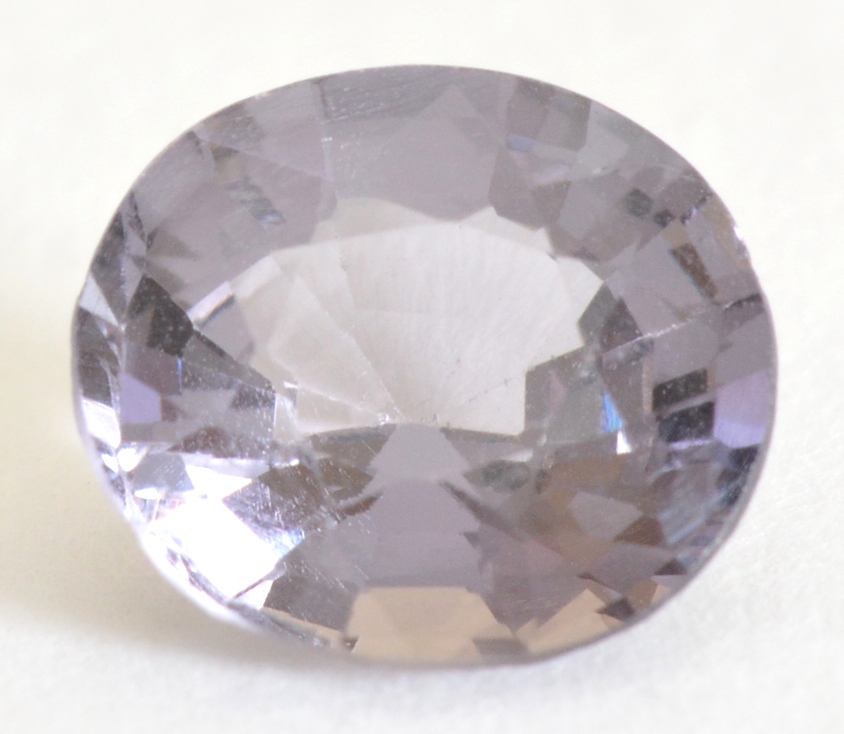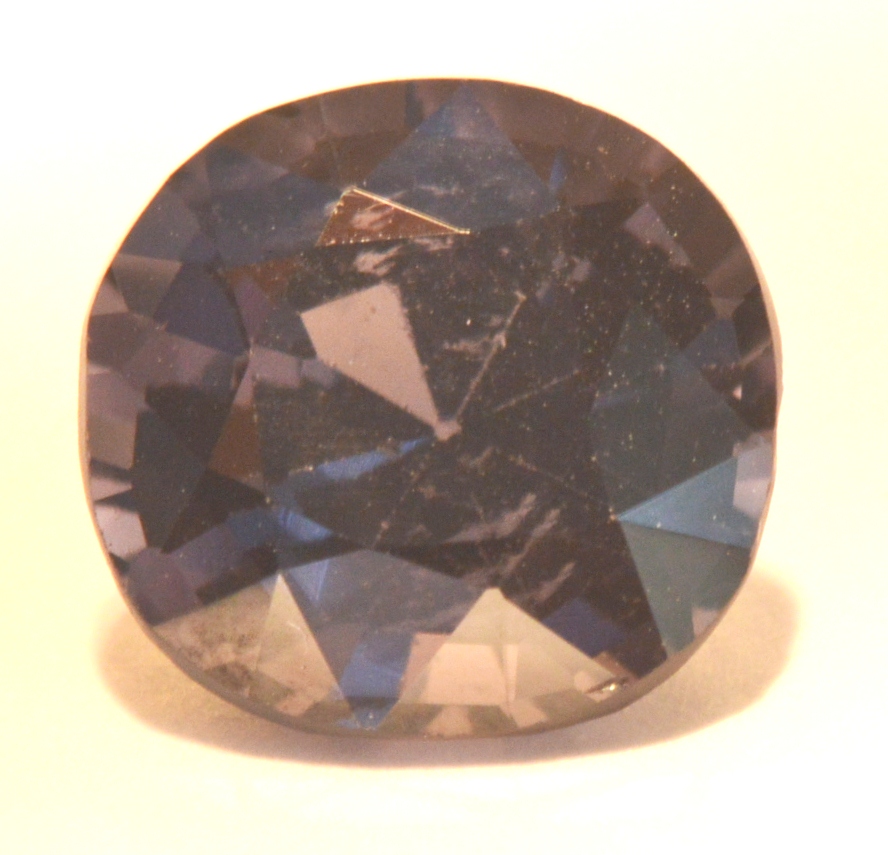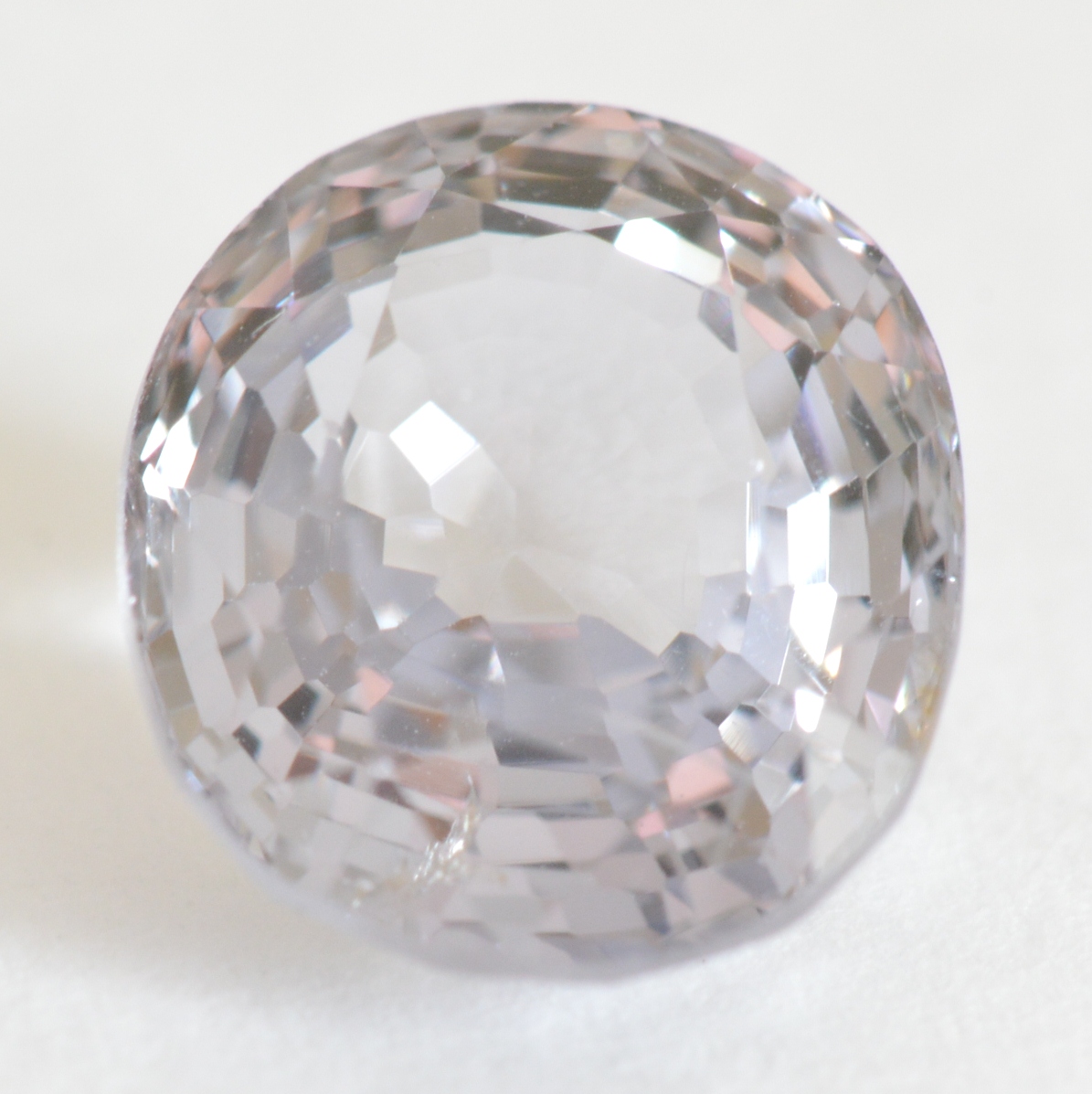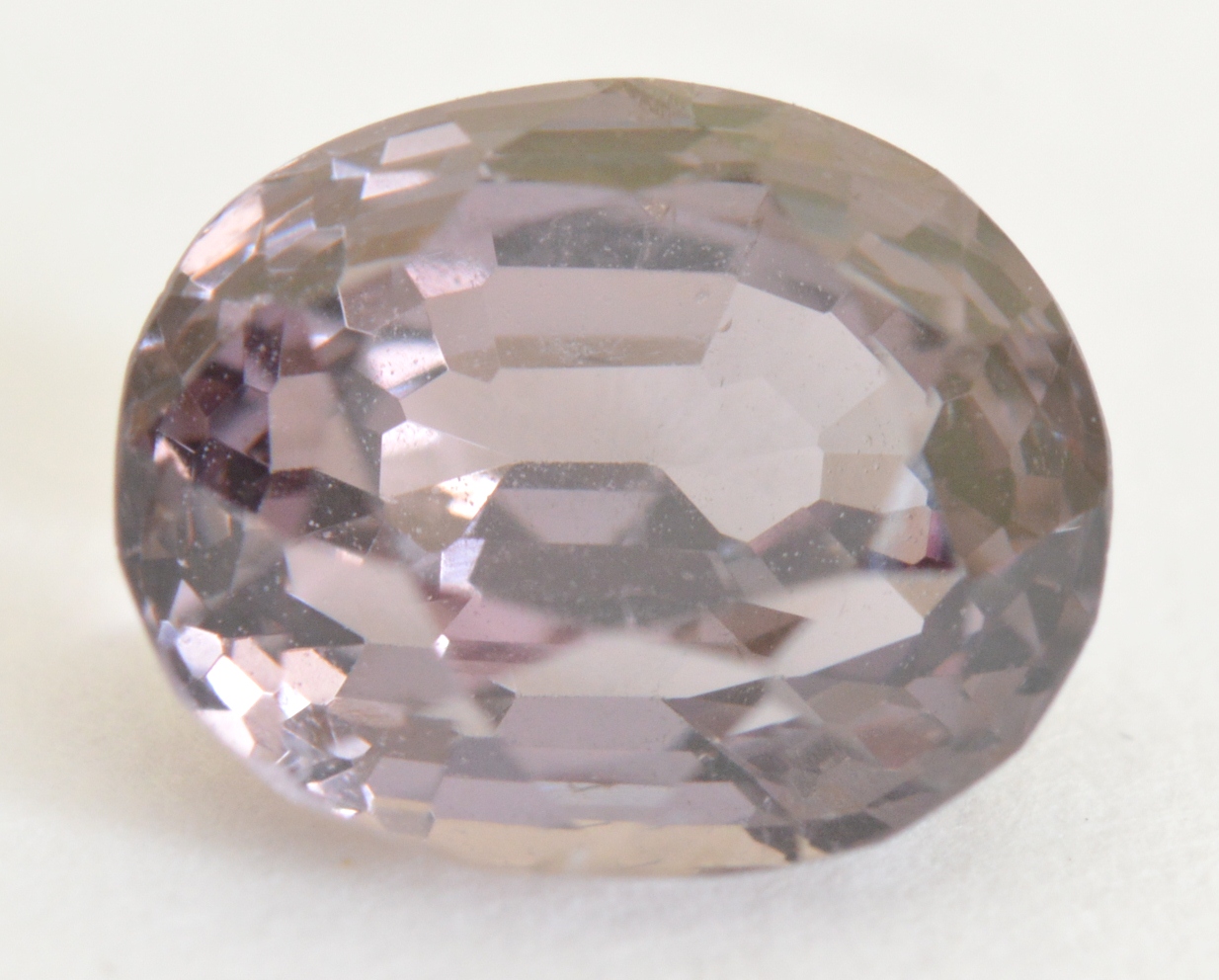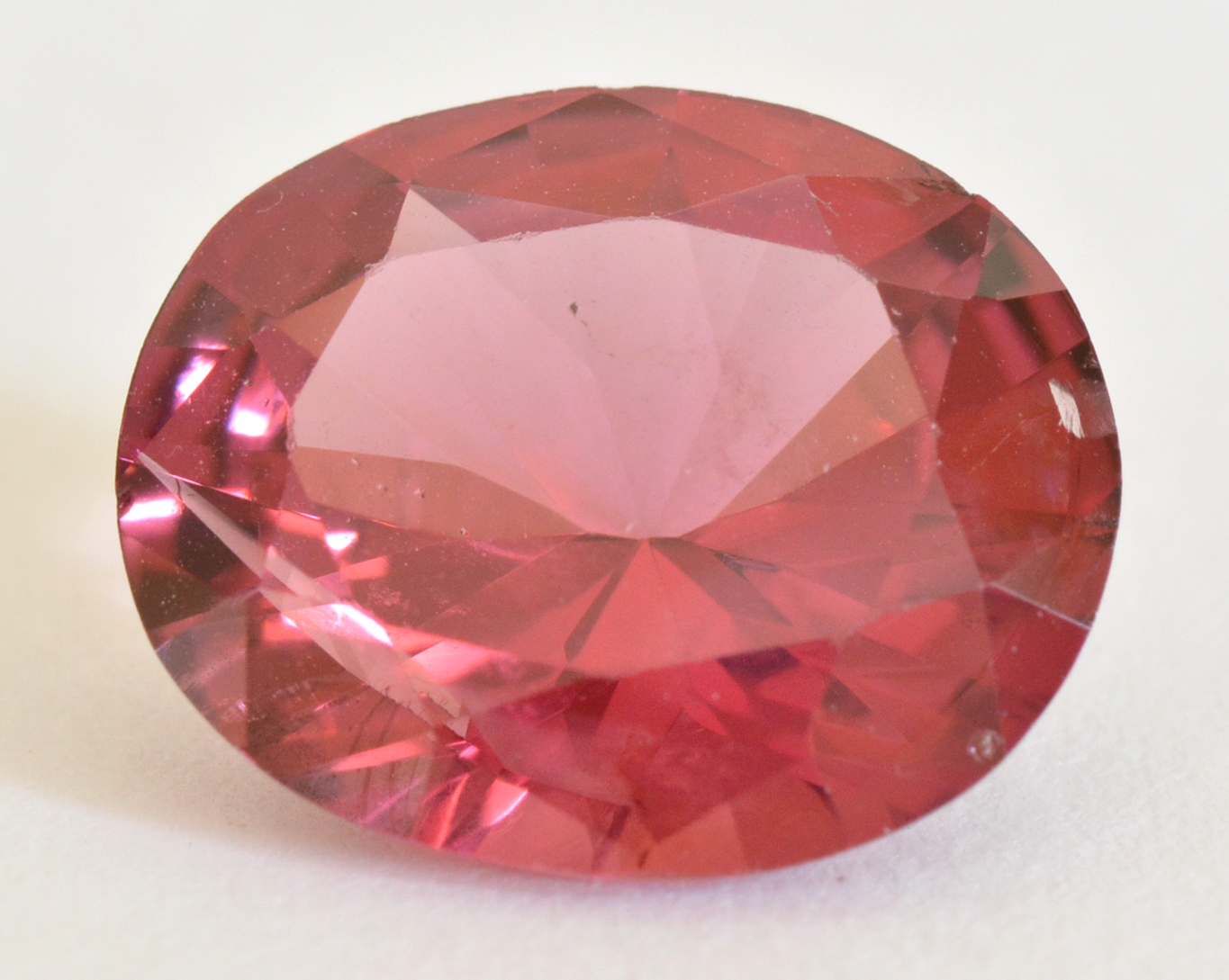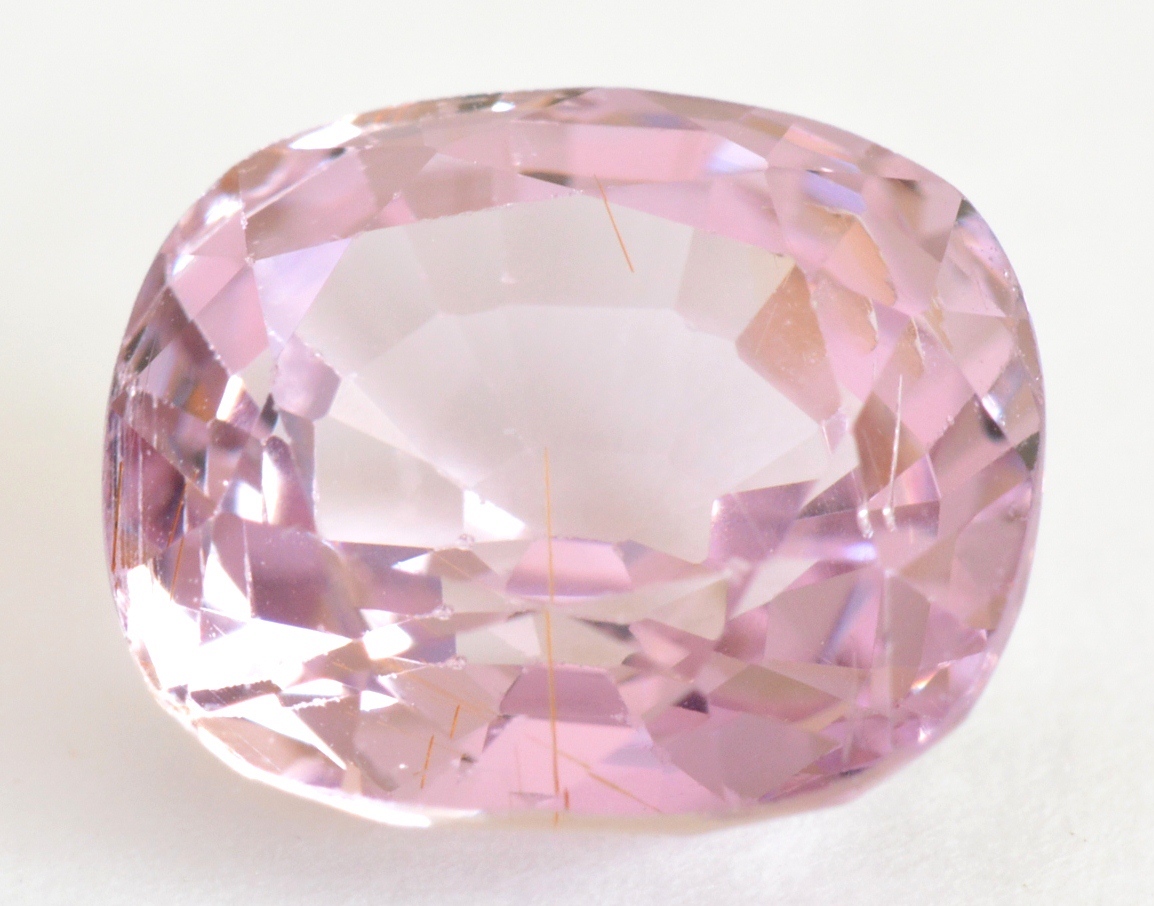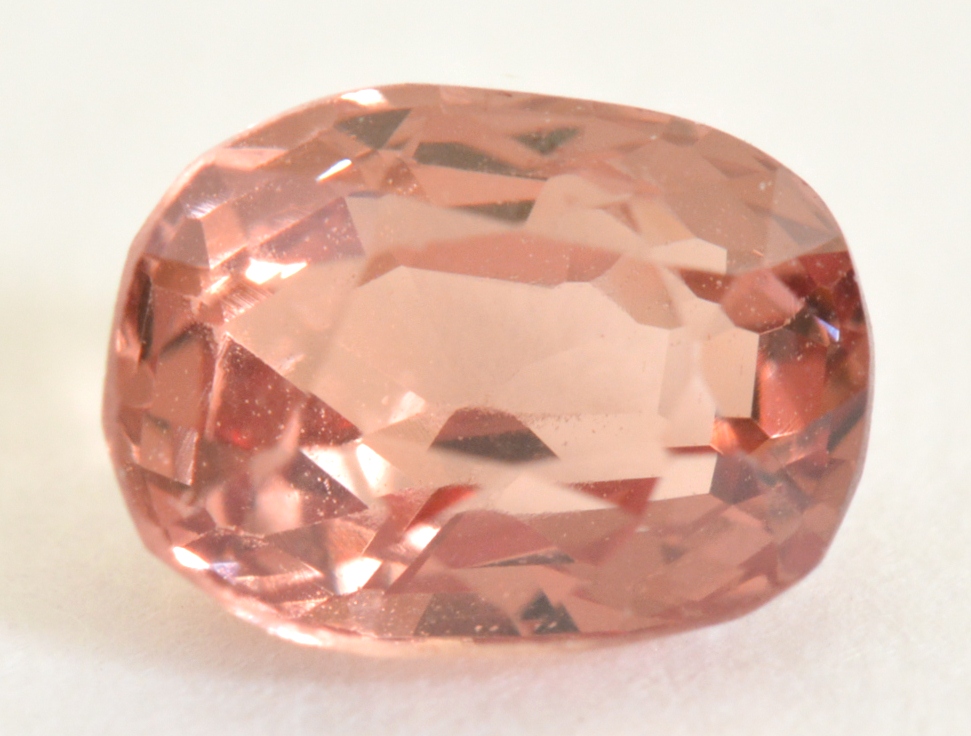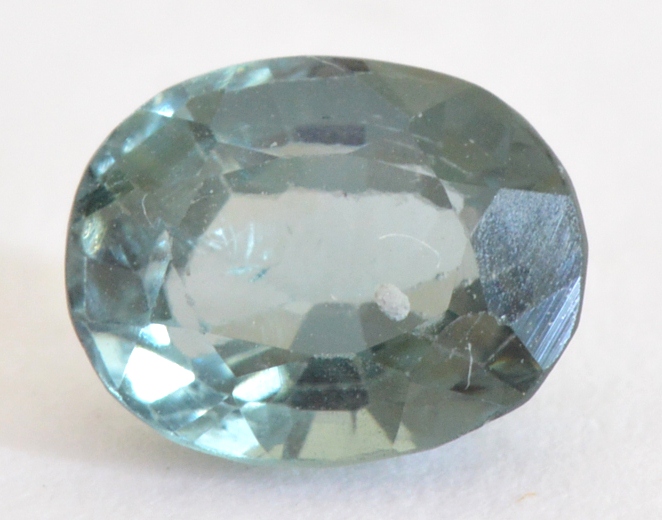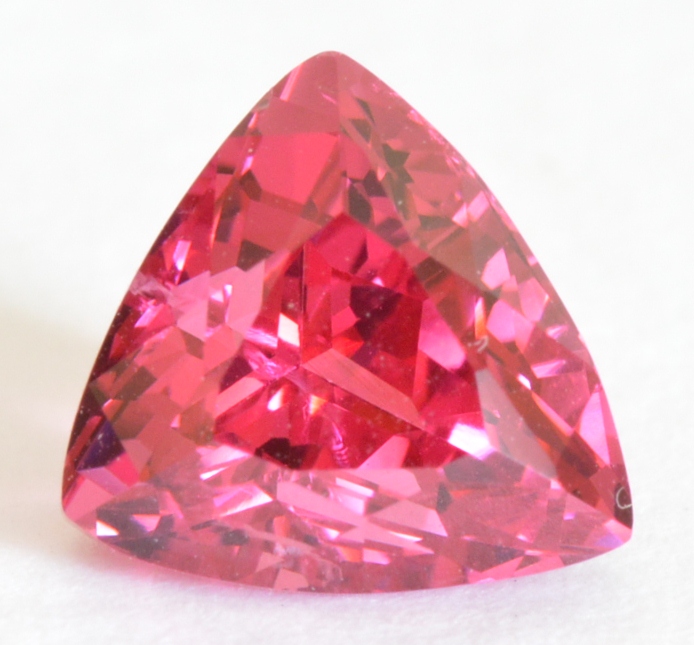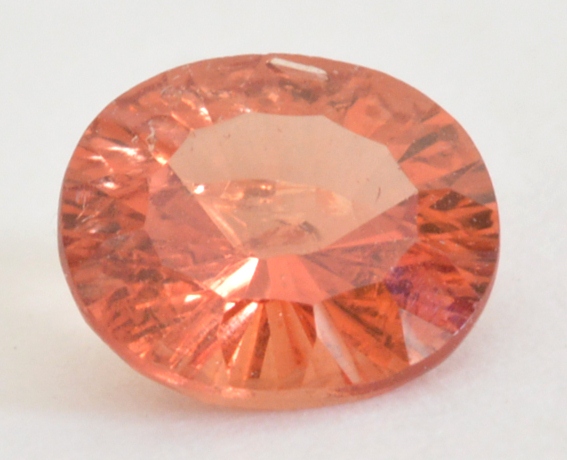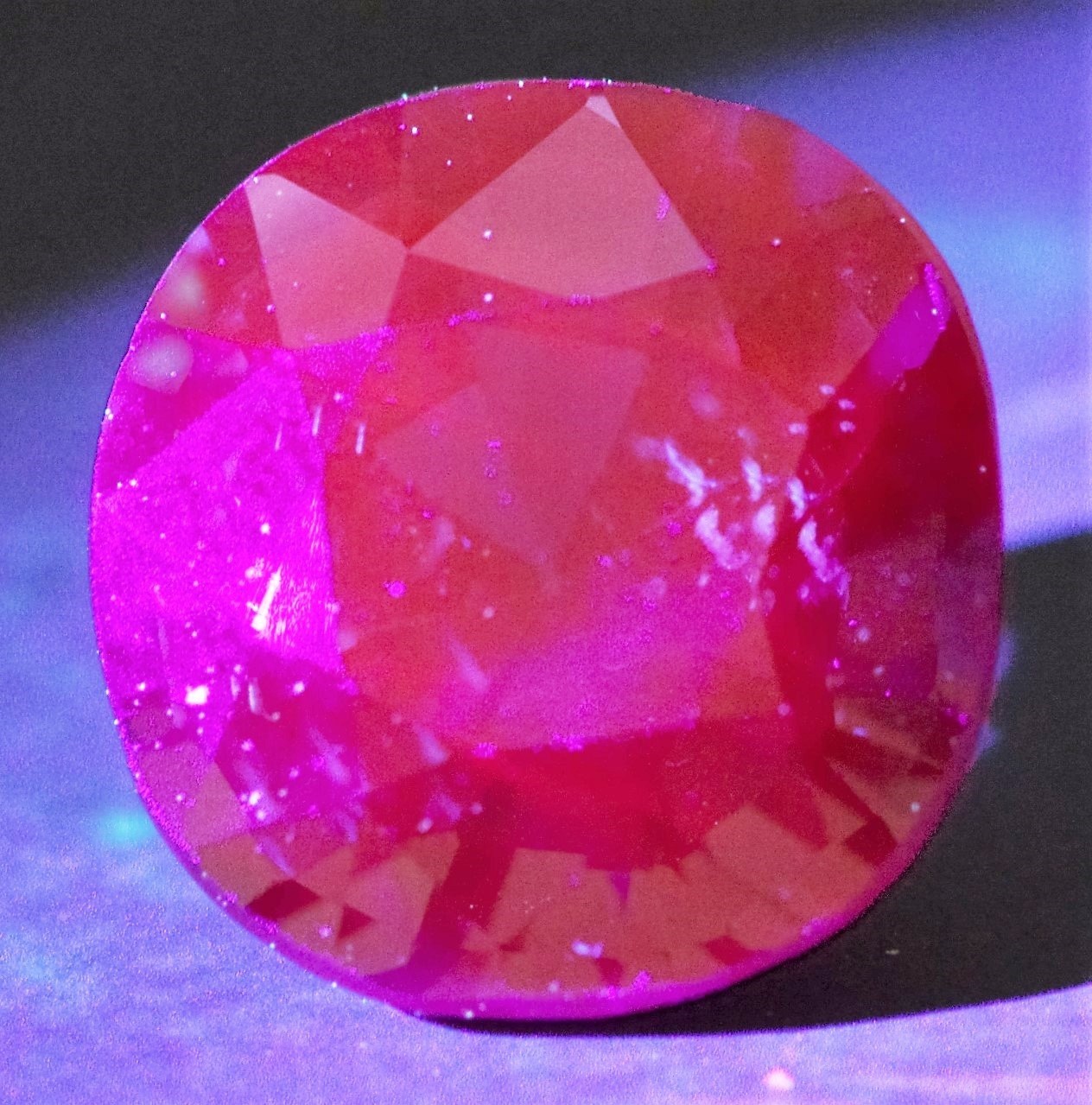Light Red Spinel, Burma
3.15ct., Weak, SI 17
Light Pink Spinel, Sri Lanka
2.26ct., Weak, SI 17
Light Pink Spinel, Sri Lanka
3.67ct., Diamagnetic, SI < 0)
Vivid Pink Spinel, Tajikistan
4.49ct., Weak, SI <20
Purple Spinel, Sri Lanka
1.71ct, Weak, SI 56
Purple Spinel, Sri Lanka
3.46ct, Weak, SI 30
Pale Violet Spinel, Sri Lanka
2.15ct., Weak, SI 30
Near-Colorless Pink Spinel
1.70ct., Diamagnetic, SI <0
Near-Colorless Gray Spinel
3.07ct., Weak, SI 17
Bluish Gray Spinel
1.49ct., Weak, SI 49
Grayish Green Spinel
1.94ct., Weak, SI 42
Dark Red Spinel, Sri Lanka
3.72ct., Weak, SI 22
The two dark red Spinels shown below have similar color, but one is much more magnetic than the other. The gem on the left is weakly magnetic, while the gem on the right is the only red Spinel we tested that showed a strong magnetic response to a handheld magnet (SI 139).
Red Spinel
Chromium is the primary coloring agent in red, pink, and orange Spinels, although recent research has shown that vanadium (V3+), iron (Fe3+) and iron-to-iron (Fe2+-Fe3+) charge transfer are also involved (Liu, Y. et al., 2023). The concentration of chromium in some extremely vivid red Spinels can be high enough to contribute to the total measurable magnetism. All natural red Spinels in this study showed detectable magnetism. Most were only weakly magnetic.
Iron rather than chromium is likely the main contributor to magnetism in dark red Spinels. As illustrated below, the light red gem on the left has similar magnetic susceptibility as the dark red gem on the right. The lighter red gem has higher chromium content, and its very low magnetic susceptibility could possibly be due primarily to chromium. It fluoresces under long wave UV light. The dark red gem on the right does not fluoresce, and the magnetism is likely due primarily to iron.
Red Spinel
4.96ct., Strong, SI 139
The reasons for such variations in intensity of red color, and for the inconsistent association between color intensity and magnetic susceptibility, are not clear. We can speculate that the variation may be possibly be related to the amount of chromium and to different ratios of ferrous iron (Fe2+) to ferric iron (Fe3+). Lower chromium content in conjunction with gray color due to a small amount of ferrous iron (Fe2+) might result in dark red color and low magnetic susceptibility, as in the red oval gem above left. More ferric iron (Fe3+) might induce higher magnetic susceptibility without darkening color, as in the red rectangular gem above right.
Pink Spinel: Chromium and vanadium are present only in trace amounts in pink Spinels (Muhlmeister, et al., 1993), and any magnetic attraction is due entirely to iron. Light pink Spinels have low iron content and are often diamagnetic, while darker pink Spinels tend to be weakly to moderately magnetic due to more iron. Three examples of pink Spinels ranging from diamagnetic to moderately magnetic are shown below. The diamagnetic gem on the left is likely colored primarily by chromium (and possibly vanadium), while the weakly magnetic gem in the center has some iron and a hint of blue color. The moderately magnetic pink gem on the right has greater color intensity due to higher concentrations of both iron and chromium/vanadium.
Pictured below is a remarkable example of two pink Spinels of similar color intensity that have strikingly different magnetic susceptibilities. The vivid pink gem on the left has weak magnetic susceptibility that is detectable with a magnetic wand, but so low that it cannot be measured with a Hoover balance. The vivid pink gem on the right is strongly magnetic, with a measured susceptibility that is higher than any pink Spinel in this study, and also higher than any red Spinel. The strong magnetism suggests the presence of cryptic iron (Fe3+), and this iron content is confirmed with a spectrometer. The gem on the left below shows UV fluorescence from chromium, while all fluorescence is quenched by iron in the gem on the right.
Dark Pink Spinel
5.74ct., Moderate, SI 82
Vivid Pink Spinel
1.65ct., Strong, SI 165
Orange Spinel: Orange as the primary body color is an unusual color for Spinel. This color has been attributed primarily to traces of vanadium (Zhao, 2023). Orange is usually a component color along with pink/red rather than a pure color in Spinel. All orange, pinkish orange and reddish orange Spinels we tested were either diamagnetic or very weakly magnetic, indicating very low levels of iron. None of our orange Spinels showed fluorescence, perhaps due to the low levels of chromium or to the presence of vanadium. All three orange Spinels shown below are diamagnetic.
Orange Spinel, Burma
0.85ct., Diamagnetic, SI < 0
Reddish Orange Spinel
1.38ct., Diamagnetic, SI < 0
Pinkish Orange Spinel, Burma
0.77ct., Diamagnetic, SI <0
Purple, Color Change and Violet Spinels
Purple color and violet color in Spinel is primarily attributed to iron (Zhao, 2023) rather than to mixing of blue color (derived from cobalt) with pink & red color (derived from chromium). On average, the magnetic susceptibility of purple Spinel is intermediate between that of blue Spinel and pink/red Spinel. All purple Spinels tested were weakly magnetic (SI 22-56). Due to iron content, all showed magnetic attraction, and none showed fluorescence.
Red Spinel
1.78ct., Weak, SI 30
Color change is an unusual phenomenon in Spinel. The bluish gray Spinel pictured below shows pinkish purple color when incandescent light is applied. Color change can be primarily attributed to ferric iron (Fe3+) and possibly chromium content within this gray gem. This gem also fluoresces red under long wave UV light. The low iron content in this weakly magnetic Spinel permits fluorescence, which is likely due entirely to chromium, although our testing cannot rule out cobalt as a contributing factor.
Blue to Purple Color Change Spinel
3.10ct., Weak, SI 43
Daylight to Incandescent Light to UV Fluorescence
Violet is another unusual color for Spinel. The weakly magnetic gem below is colored by low levels of iron, cobalt and chromium. Purple gems contain higher concentrations of chromium than violet gems.
Near-Colorless Spinel
Completely colorless Spinel is rare. Two near-colorless Spinels were tested for this study. The Spinel with a slight tinge of pink due to chromium (below left) was diamagnetic, while the gem with a slight gray tinge due to ferrous iron (below right) was very weakly magnetic. Under long wave UV light, only the pinkish gem on the left contains enough chromium to show fluorescence.
Gray Spinel
Gray color is caused primarily by ferrous iron (Fe2+). It often appears as a component color or "mask" rather than as a stand-alone color in Spinel. Gray color may be the result of dark blue color combining with light blue color (light transmission windows in the visible spectrum are at 430nm and 490nm) and pink color from Fe3+. Pinkish gray Spinel is also common, with pink color component caused by light tansmission in the red region of the spectrum due to ferric iron (Fe3+). Our study found that Spinels which have gray as the dominant color component are weakly magnetic.
Pinkish Gray Spinel
2.11ct., Weak, SI 35
© Kirk Feral 2015, All Rights Reserved. These materials may be duplicated for educational purposes only. No part of this website may be duplicated or distributed for profit, for commercial purposes, or for posting to another website, without the expressed written consent of the copyright holder.
Fluorescence: In pink and red Spinels, significant chromium content along with low iron content are conditions that permit maximum UV fluorescence, which appears as a bright red glow. Chromium causes some pink Spinels to show very strong fluoresce under long wave ultraviolet light. This occurs only in diamagnetic or weakly magnetic pink gems with low iron content. Dark red natural Spinels can have UV fluorescence that is weak or even absent when magnetic susceptibility is relatively high due to iron. We have also encountered unusual instances where a bright red Spinel has so little iron that it is diamagnetic, yet it still fluoresces only weakly. In such cases we presume that fluorescence from chromium may be inhibited by a significant amount of vanadium (another strong quencher of fluorescence) rather than by iron.
The Spinels that showed the greatest fluorescence in our study were reddish pink or orangey pink gems from Burma and Tanzania (regions that produce low-iron gems). This includes the beautiful pinkish red Mahenge Spinel from Tanzania (below right). Vivid orangey-pinkish-red "Jedi" Spinels from Burma are also known to be highly fluorescent. Besides high chromium and low iron content, increasing zinc content is also associated with stronger fluorescence in "Jedi" Spinels (Zhao et al., 2022). No "Jedi" samples were available for our study.
Pinkish Red Spinel, Burma
4.50ct., Weak, SI <20
Green Spinel
Green is very rarely seen as the dominant body color in gem Spinel. Green Spinels that we have examined have significant blue or gray as the secondary color, and these gems can be described as light blue-green and light gray-green Spinels. The primary coloring agent is iron, and iron-to-iron (Fe2+-Fe3+) intervalence charge transfer may be responsible for the green color, as has been found in Gahnite Spinel. The two rare Spinels pictured below show light green color as the dominant hue (light blue-green on the left and light gray-green on the right). Both gems are weakly magnetic.
Blue-Green Spinel
0.96ct., Weak, SI 48
A variety of natural pure green Spinel called Chlorospinel is colored by ferric iron (Fe3+) in addition to copper (Cu2+). Chlorospinels are very rarely found as faceted gems, and none were available for this study.
Mahenge Spinel, Tanzania
2.31ct., Weak, SI <20
The most valuable Spinel, other than the rare blue Cobalt Spinel, is the rare and beautiful pink Spinel with the trade name "Mahenge Spinel" from Mahenge, Tanzania. This vibrant pink color variety is relatively new on the market and has only been widely known since 2007. The purity of pink color from chromium is permitted by low iron content, and strong color saturation is no doubt due to a relatively high concentration of chromium. Highly fluorescent under UV light, this gem also seems to glow in daylight, possibly due to daylight fluorescence, as we find in some low-iron Rubies. Like other low-iron pink Spinels, Mahenge Spinels are weakly magnetic.
Bright Pink Mahenge Spinel
6.02ct, Weak, SI 17
Magnetism in Gemstones
An Effective Tool and Method for Gem Identification
© Kirk Feral

